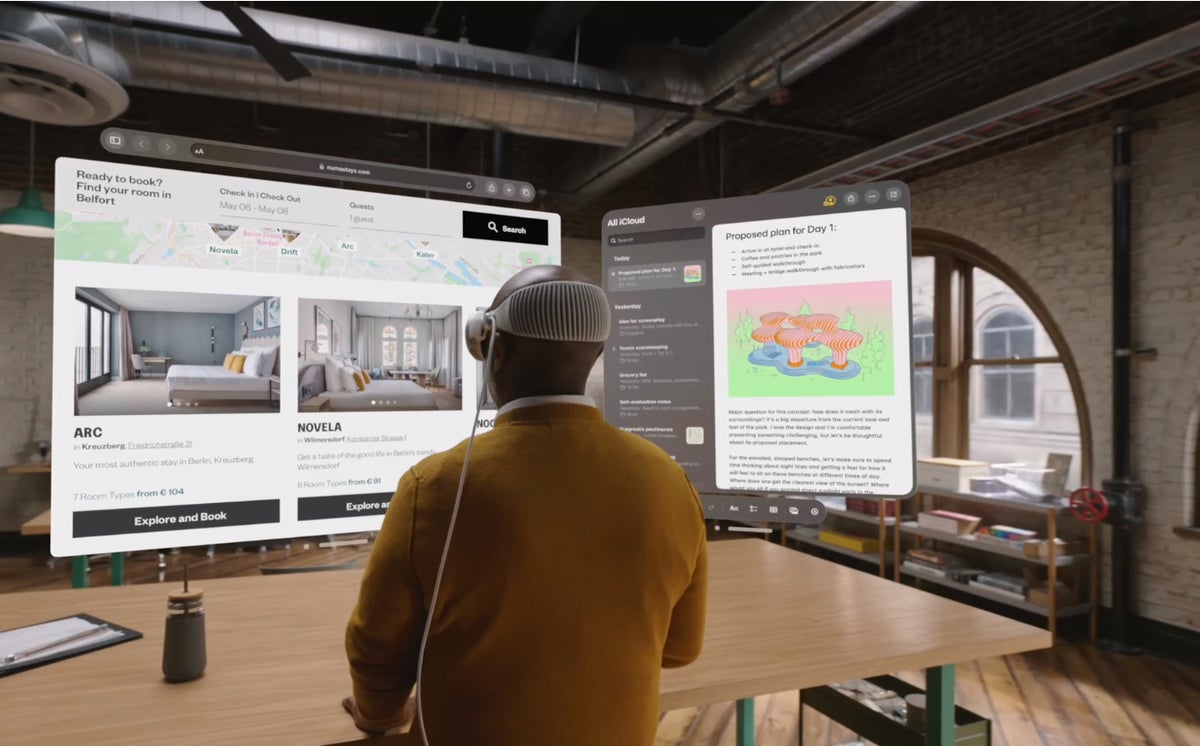At the launch of its Vision Pro headset in June, Apple offered up a variety of consumer entertainment uses, from watching front-row sports games to dodging 3D dinosaurs. But as the Pro branding suggests, Apple notably showed how the “spatial computing” device — the company’s marketing term for augmented and virtual reality — is also a natural fit for the workplace.
While other vendors, from Meta to Google and Magic Leap, have targeted the enterprise with AR and VR devices of their own, the overt focus on business was uncommon for Apple.
“The Vision Pro is unique in that Apple did talk about consumer use cases and entertainment, but they’re clearly focused on commercial use cases, in part because it’s such an expensive product,” said Tom Mainelli, group vice president for IDC’s device and research group.
Even if the hefty $3,500 price tag could hinder widespread adoption, the Vision Pro has the potential to be a productivity tool when it arrives in 2024.
“One of the main ways Apple is trying to position the Vision Pro as a headset for work is using it as an extension, or even a replacement, for your traditional desktop PC or laptop,” said Leo Gebbie, principal analyst at CCS Insight covering connected devices.
From an individual productivity perspective, Apple’s VisionOS provides access to multiple virtual screens that are accessible in augmented reality, with a user able to see their surroundings using the headset’s “pass through” function. As well as eye- and hand-tracking and voice recognition inputs, Apple’s wireless Magic Keyboard and touchpad can be used to interact with apps.
“The immediate use case is the idea that you could potentially have infinite display capabilities when working in your Mac,” said Mainelli. “That’s the least sexy use case for something like this, but I also think it’s probably the most realistic use case [in the short term].”
In addition to Apple’s own apps, including its Freeform brainstorming app, Keynote presentation tool and FaceTime for video meetings, users will also have access to productivity apps from Microsoft, such as Excel, Word and Teams, as well as Cisco and Zoom. A wider range collaboration and productivity apps will likely be available next year.
Mainelli said other workplace uses are likely to include collaboration, with the ability for designers to interact with 3D objects for instance, as well as employee onboarding and training; both are early enterprise use cases for VR.
What it’s less suited to is mobile use, even for remote assistance for frontline workers; that’s one area where augmented reality has already shown its value in the workplace. But the design of the Vision Pro — which is not exactly lightweight and requires a tethered battery back for around two hours of on-the-go power — and its focus on immersive virtual reality means deskless workers won’t find the device as useful.
“It’s really more of a…
2023-07-08 18:00:04
Link from www.computerworld.com rnrn



















